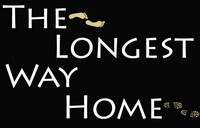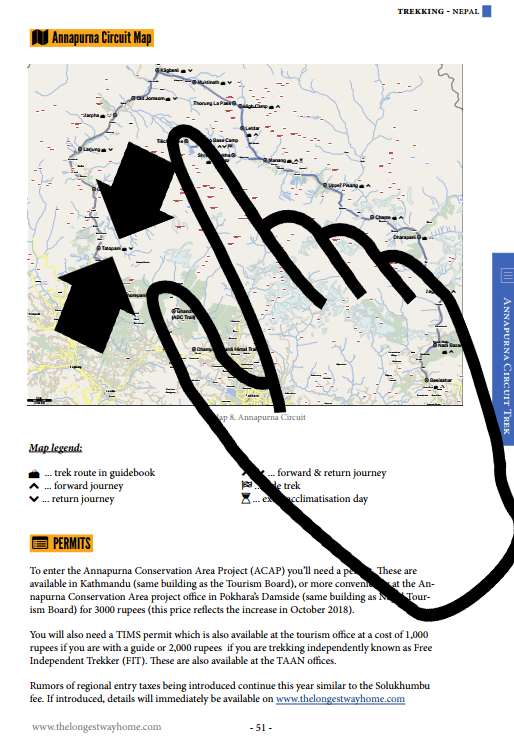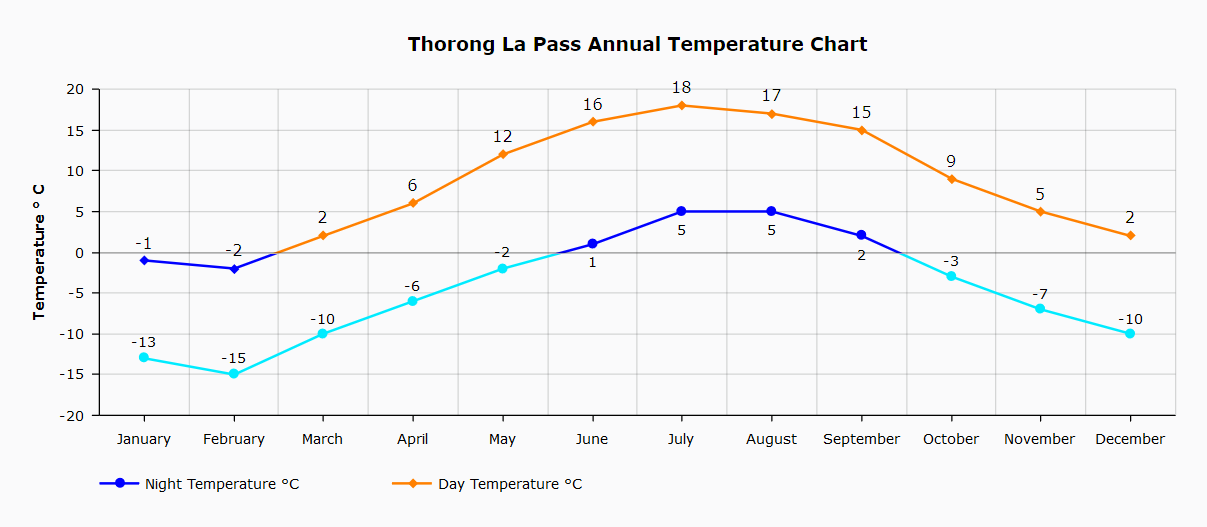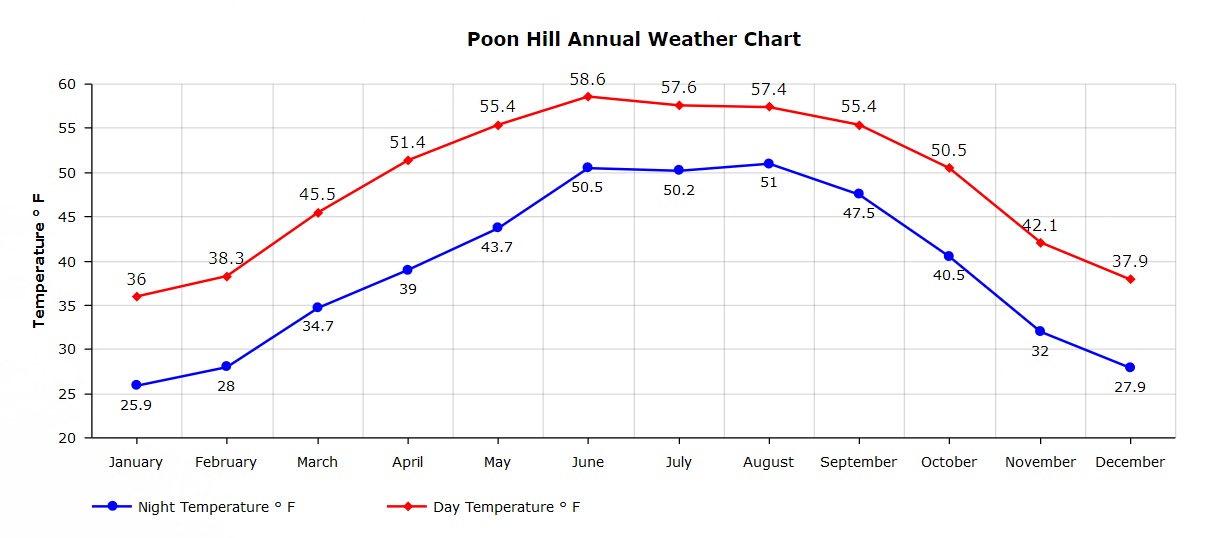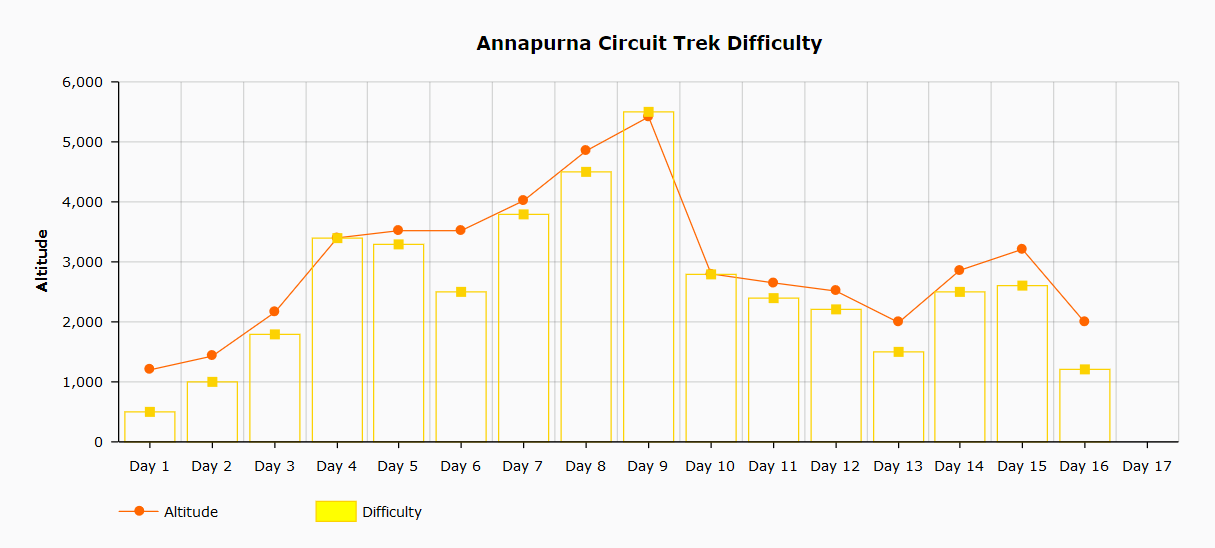About the Annapurna Circuit
The Annapurna Circuit (APC) is one of the most popular treks the world. It follows a path that will take you from green pastures to leafy pine forests to arid landscapes and spectacular views of the Annapurna mountain range.The circuit trekking route is versatile and can be completed as a whole circuit between 8-18 days or you can trek certain sections ranging from 3 days and up.

Thorong La Pass on The Annapurna Circuit Trek
Take on one of the world's most diverse and exhilarating trekking experiences along the Annapurna Circuit, catering to both adventurous souls seeking a challenging ascent and those seeking a leisurely pace tailored to shorter durations.Recent concerns about the newly constructed roads along the trek's eastern and western sections have discouraged some trekkers from embarking on the extended journey. However, these roads have not diminished the circuit's allure, and in fact, they have opened up new trekking possibilities. By connecting these newer treks within the region to the classic Annapurna Circuit, I have created an enhanced and extended itinerary that can be tailored to suit every trekkers' preferences. This new extended route allows you to immerse yourself in the circuit's grandeur for up to 30 days, allowing for a more comprehensive exploration of its diverse landscapes and captivating culture.
For those short on time, there's also a 8 day Annapurna Circuit option.
Let's start our trek knowing that we'll be discovering one of the world's most diverse and rewarding trekking experiences.
Trek Overview
Difficulty: Moderate |
Days: 8-18 |
Max Altitude: 5,416 m |
Distance: 161 km - 229km |
Accommodation: Lodge |
Where is the Annapurna Circuit?
The Annapurna Circuit (APC) trek is located in the Annapurna Conservation Park in the central region of Nepal. There are several other treks within the park like the Poon Hill Trek, Annapurna Base Camp, and Mardi Himal.
At its highest the Annapurna Circuit reaches 5,416 meters (17,769 ft) at the Thorong La pass.
The average duration for the Annapurna Circuit is between 8 & 18 days. Though this can be extended by side treks or shortened by taking a flight or vehicle.
Maps of the Annapurna Circuit
This map shows you the most popular Annapurna trekking route.
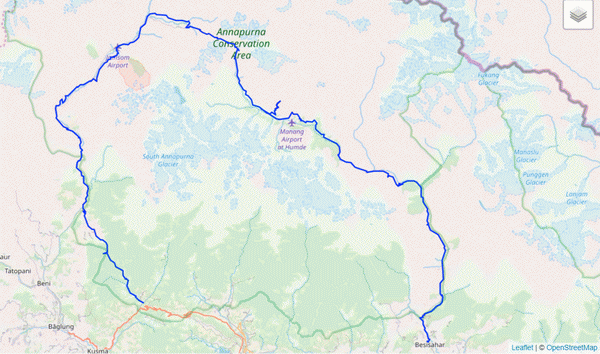
See on Google Maps - Get the Annapurna Circuit GPX
Please note this map should not be used as a practical trekking map. While the main Annapurna Circuit route remains the same there are variations depending on side trails, weather conditions, time of year, natural events and physical changes to the trek paths. No support is given for GPX files and they should only be used as rough trail routes. Do get my Trekking in Nepal guidebook for more detailed maps!
The above map is a sample from my Nepal guidebook - the only guidebook with trekking maps that can be zoomed right into - even for the smallest of trails!
Facts about the Annapurna Circuit
Highest point of the Annapurna Circuit trek
At 5,416 meters (17,769 ft) the Thorong La pass marks the highest point of the Annapurna Circuit. You cross over after a night in High Camp or Thorong Phedi. There is a plaque at the top covered in prayer flags which is a popular photo stop.
Highest sleeping point on the Annapurna Circuit
Thorong Phedi (4450 m) offers accommodation which is often known as low camp. While high camp (4850 m) is another option for a last nights stay before crossing Thorong La pass.
How long have people been trekking the Annapurna Circuit?

It has always there with trails used as trading routes between Nepal and Tibet. However as a trekking route it really only became open in the late 1970's.
The original trail took about 23 days to complete on foot in the early 1980's.
Today it can be done in 8-18 days.
What mountains can you see from the Annapurna Circuit?
The Annapurna massif displays the peaks of Annapurna I, Annapurna II, Annapurna III, Annapurna IV. Other peaks include Machhapuchhre, Dhaulagiri, Manaslu, Gangapurna and Tilicho Peak. High peaks range from 6,000 meters to over 8,000 meters.
Highlights of the Annapurna Circuit
Highlights of the Annapurna Circuit trek include:

- Magnificent mountains seen from all directions
- Number of trekking days can be customized
- Good accommodation options
- Diverse menus
- Hot springs in several locations
- Valley Trails
- Village Trails
- Mountain trails
- High pass
- Culturally diverse
- Location intersects with other treks
How to arrange a trek for the Annapurna Circuit?
Arranging a regular Annapurna Circuit trek
There are many options here ranging from package tours to independent trekking. As per usual booking online can be significantly more expensive than booking in person when in Nepal.
Package tours bought online
Package tours bought online generally have a fixed itinerary or are confusing to understand. Many will be filled with different days, different jargon and different options making the whole thing difficult to get your head around.
Some will include food, porters, accommodation and permits. While others will leave something's out.
Pro's include that nearly everything is done for you ahead of time.
Con's include you don't know who your guide will be and you'll be paying a lot more than getting everything done yourself. There's also the possibility of hidden extras.
Here's a list of recommended trekking tours online.
Package tours bought in Nepal

If you have a couple of days in Nepal then you can arrange a package trek around the Annapurna Circuit yourself. Do shop around and don't get swayed by the typical over talk about places names or villages enroute.
What's important here is to know what's included, meet your guide before hand and feel comfortable with the agency/guide.
Do make sure that everyone knows what's included in the total price. Accommodation, permits, bus fees, meals etc.
Quite often these package tours are broken up into different categories. High priced categories will included everything, while lower priced package tours might not include accommodation.
Pro's here include actually meeting the guide before hand, being able to ask questions in person and it's much cheaper than online once you've figured out what's included.
Con's include listening to the bewildering amount of options people will give you and not knowing all your options.
If you don't have time to do this yourself or find the range of options bewildering then use my Find a Trekking Guide Service.

Hiring an Annapurna Guide yourself
You might want to save on costs a little more and simply hire an independent guide rather than a package tour. Again the costs come down substantially however you'll be expected to do more.
You'll have to bargain and barter for your own room and order your own meals. Though the more friendly you are with the guide the more chance they'll help you out.
Pro's included a much cheaper trek with more independence.
Con's include having to bargain and barter for your own rooms (it's not hard) and order your own meals.
If you are looking for a guide yourself then I recommend you read my article on How to hire a trekking guide in Nepal. Alternative use my Find a Trekking Guide Service.
Independently trekking the Annapurna Circuit yourself
It is no longer possible to trek the Annapurna Circuit trek alone. In March 2023 Nepal Tourism Board banned solo trekking in Nepal. You now need to take a trekking guide.
My guidebook First Time Trekking in Nepal has been used on many occasions by independent trekkers and is the most up-to-date book on this trek.
If looking for a guide for the Annapurna Circuit trek I recommend you read my article on How to find a trekking guide in Nepal or use my Find a Guide Service.
Best time of year to go trekking the Annapurna Circuit
Weather along the Annapurna range is subject to change:
Due to the large and diverse are the Annapurna Circuit covers conditions will differ in certain regions. For example at the high altitude of Throng La Pass the conditions will be far harsher than at Jomsom.
Thorong La Weather by month
| Avg. Temperature (°C) |
Avg. Temperature (°F) |
Precipitation / Rainfall (mm) |
|
|---|---|---|---|
| January | -6 | 21.2 | 9 |
| February | -7 | 19.4 | 26 |
| March | -5 | 23 | 9 |
| April | 0 | 32 | 14 |
| May | 5 | 41 | 22 |
| June | 8 | 46.4 | 50 |
| July | 12 | 53.6 | 140 |
| August | 11 | 51.8 | 140 |
| September | 10 | 50 | 80 |
| October | 2 | 35.6 | 9 |
| November | -2 | 28.4 | 0 |
| December | -5 | 23 | 0 |
Do note that altitude and mountainous terrain play a strong factor in the comparative weather temperatures. Wind-chill will drive temperatures down by -10+. With this in mind the following chart has high's and low's at Thorong La and add on wind-chill.
Annapurna Circuit Annual Temperature Index Chart
If all those temperatures seem to cold then don't forget the above is about as cold as it gets as it takes temperatures from Thorong La Pass which is the highest pass on the trek. As an example of temperatures on the rest of the trek take a look at the Poon Hill temperature chart below which will give you an indication of what to expect at lower altitudes.
Best weather months to trek the APC
There are however peak seasons and the following months have traditionally been used as a guide for preferred times of the year to trek the Annapurna Circuit.
October - November/(early)December: this is Nepal's peak and best time to go trekking.
February-March-April: this is the end of the dry season and the second best time of year to go trekking.
November/December to January/February: the skies are clear but it can get very cold and there is a risk of passes being closed due to snow.
May - June: This is Nepal's hot pre-monsoon season and it can get very warm indeed. The valleys however are starting to bloom with flowers though.
June - September: this is Monsoon season and the least popular time to go trekking in Nepal. The risk of leeches, downpours and occasional mudslides increase.
For more details please see my guide on the best time of year to go trekking in Nepal
What permits are needed for the Annapurna Circuit Trek?
If you are on a package trek or tour to the Annapurna Circuit then your guide or trekking agency will and should take care of all your permits for you. For independent trekkers you'll need to do it yourself. In all cases here's what permits you need and how to get them for the APC trek.
You need two permits for the Annapurna Circuit Trek
- Annapurna Conservation Area Project Permit (ACAP)
- Trekker Information Management System (TIMS Card)
Both or these permits can be bought in either Pokhara or Kathmandu at the Tourist Information Center. Pokhara is closer to the start of the trek. Both offices are open between 10am - 5pm however it is better to arrive an hour or so before closing time. In Pokhara getting the permits only takes about 30 minutes if you have everything you need.
Get the Annapurna Conservation Area Project Permit (ACAP)
An Annapurna Conservation Area (ACAP) covers all of the Annapurna National Park.

The permit is only valid for one entry and one exit. However, so long as you don't exit, you can use it for as many treks
within the Park. You can also get one
online via an e-permit
https://epermit.ntnc.org.np
(additional surcharge applicable) or via your trekking agency (cheapest and easiest).
Guides can do
this before you arrive.
It is a mandatory permit.
- Fill out the ACAP form
- Hand over the completed form, your passport and 2 passport photos ( do note the office taking photos for free at the moment)
- Pay the 3,000 rupees (only payable in Nepali Rupees)
- Get your ACAP permit
Get the Trekker Information Management System Card (TIMS)
The Trekkers Information Management System Card (TIMS) is meant help protect trekkers through registration checkpoints along the trek. Fees also go towards guide and porter insurance along with their training.

Do note that
the TIMS Card is now a flat 2,000 rupees and
a trekking company is the only one that can apply for
it.
Both the ACAP and TIMS card can be
used for all applicable treks within the Annapurna
Park until they receive an
exit stamp. Once either permit have an exit
stamp they cannot be used again. So if you
do the Annapurna Circuit and then return to Pokhara and
decide you want to do the Annapurna Base Camp trek
you'll need to get new permits. However if you do the
Annapurna Base Camp trek while on the Annapurna Circuit
then you can use the same permits. If you get exit
stamps and try to enter/leave again there is a hefty
6,000 rupee on the spot fine!
There are multiple check points for the APC trek
include Birethanti and Chomrong. Not all are open, but
TAAN are planning to open all again soon.
What equipment do you need for the Annapurna Circuit?
If you are on a package tour then your agency will give you a list of things to bring for your trek. However, keep in mind the times of year and the fact that the Annapurna Circuit is quite long. Keeping things light will make the trek easier and more enjoyable unless you have a porter.
If taking a trip to Annapurna Circuit in Nepal the following items are generally needed:

- A good pair of hiking boots
- A wind cheater style jacket
- Long sleeve shirts
- Trekking pants
- Shorts
- Underwear
- Socks
- Sunscreen
- Sun glasses
- Lip balm
- Rubber sandals
- Washing powder
- Water bottles (water tight and heat resistant)
- Water purification system
- Map
People often ask me how many shirts or socks do they need to bring on a long trek. The answer if quite simple but it also depends on you. I usually bring three shirts, underwear and socks. I wash one pair every night and let them dry strapped to me backpack as I trek the next day. It keeps the weight down and keeps you clean!
Please note the above is a very basic list. For a full comprehensive list please see my article on trekking equipment you need for Nepal
How Difficult is the Annapurna Circuit?
Download my guidebook and get the full details of this trek
It's only $4.99 USD to download this trek now in the First Time Trekking in Nepal guidebook
Or get this trek plus 28 others in a premium guidebook for only $19.99
Also available in paperback
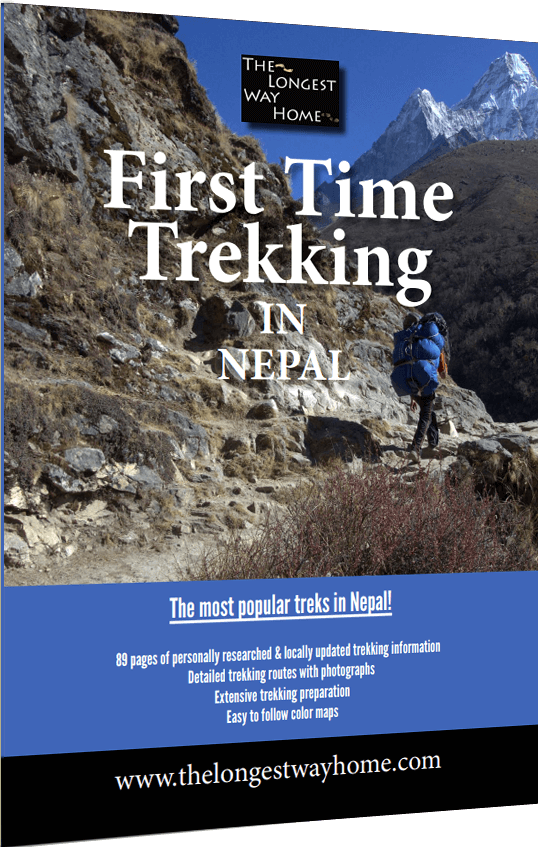
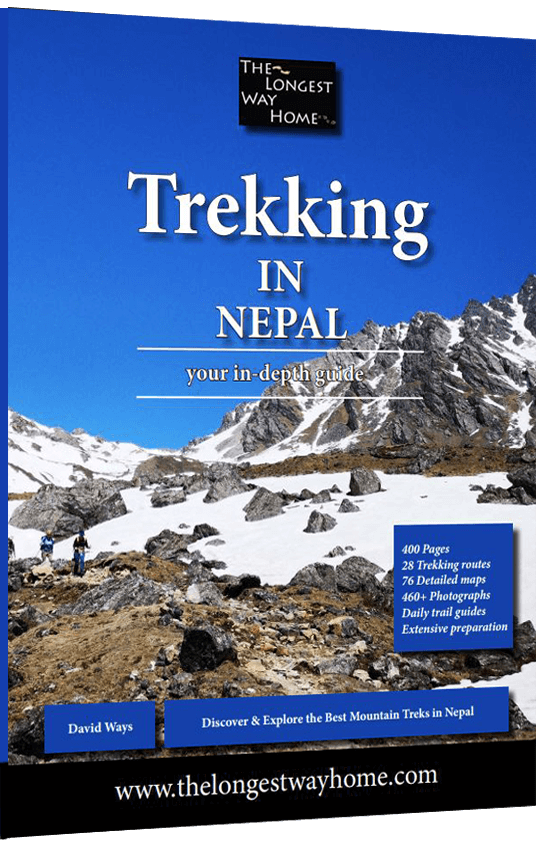
or
Get the Trekking in Nepal Guidebook $19.99A level of fitness is required to complete the Annapurna Circuit - either the full classic trek or the shorter versions. In both cases preventing altitude sickness needs to be taken seriously.
From the above difficulty chart is based on a typical 16 day APC trek.
As you can see days 1 - 2 are relatively easy. 6 hours of trekking a day well below 2,000 meters.
Day 3 and day for see a rapid increase in difficulty and altitude.
Day 5 is will take you from Pisang to Manang which some trekkers find quite easy. However it's altitude which catches many people out here and they rush on only to come back the next day quite sick. It's very important you spend another night here on Day 6.

Day 7 usually starts with the effects of altitude kicking in an the trek gets harder.
Day 8 is one of the toughest days for many as altitude reaches 4850m at high camp.
Day 9 is the hardest day on the trek with a trek over Thorong La Pass at 5416m - however what catches most people out is the decent to Muktinath which has a lot of steps and can be hard on the knees.
Days 10 - 13 are relatively easy after the previous hard days with long stretches of villages and forest terrain. The hardest is Muktinath to Kagbeni due to the winds.
Days 14-15 are the trek to Poon Hill which is the final blip in altitude you can see on the map as you go back up to 3, 210m. Tiredness for many is usually the struggle here more than altitude.
Day 16 marks the end of the trek.
How fit do I need to be for the Annapurna Circuit Trek?
A level of fitness is certainly required. It would certainly be in anyone's interest to already be considered fit.

I would advise anyone going trekking to see a doctor before they go for a check-up and to talk about dealing with altitude sickness.
For pure trekking around the whole Annapurna Circuit in Nepal you'll need to consider the amount of days you'll be out trekking to get an idea of how fit your should be. Most days include 4-7 hours of slow hiking. Keep in mind the entire trek is about 16+ days covering 160km to 230km. Consider if you can currently walk 7 hours a day? If not, then some fitness training might be a good idea!
The hardest point for many people is going from Thorong Phedi to Thorong La pass. It's a hard 45 minute climb up to high camp and then across Thorong La pass. On the other side it's a steep decent which can catch people's knees.
However altitude is often the biggest problem (time of year pending). Going slowly is essential to avoid sickness. Do read about altitude sickness in Nepal. Many gung-ho trekkers have failed the trek simply because they rushed and didn't take acclimatization days because at the time they felt good! Little did they know the next day they'd be back feeling sick.
Do remember that if you are stuck for days or too tired, road transport starts from Muktinath and you can take a bus, jeep or plane back to Pokhara from Jomsom.
Many people from all walks of life, ages and fitness levels have trekked the Annapurna Circuit. In the peak season there's nothing much to worry about in terms of cold or extreme weather.
As with most treks, generally speaking, the slower you trek, the easier it is.
What's the food like on the Annapurna Circuit?
The food is typical Nepali trekking food. Meaning you can get just about anything for a price. From steaks to pasta, pancakes and chop suey. Granted it won't be Michelin star quality food, but it will get the job done. The Annapurna region does however have a better reputation for trekking food than other trekking regions.

This is a plate of typical Dal Bhat on the Annapurna Base Camp trek - rice, lentils, potato curry, fresh vegetables and soup
Do keep in mind that you will be burning a lot of calories and you will need to drink a lot more water. Trekking staples like Dal Bhat are filling, healthy and filled with good calories to keep you fueled up.
Beer, soda, coffee, tea, hot lemon and water are also widely available. But just like food the price goes up the further you get to Thorong La pass. Once you reach Kagbeni the price starts to come down again.
Typical Annapurna Circuit Menu
| Item | Price |
|---|---|
| Porridge with milk | 300-600 Rupees |
| Fried eggs (2) | 250-450 Rupees |
| Cheese Omelet | 400-450 Rupees |
| Apple Pancake | 350-400 Rupees |
| Dal Bhat (Meat) | 500-1000 Rupees |
| Dal Bhat (Veg) | 400-800 Rupees |
| Boiled Potatoes | 300-400 Rupees |
| Fried Noodles (Veg) | 300-400 Rupees |
| Fried Potatoes with Cheese | 450-600 Rupees |
| Macaroni with cheese | 400-600 Rupees |
| Tea/Coffee | 50/100Rupees |
| 1 liter beer | 600+ Rupees |
| Soft Drinks (Coke, Sprite etc.) | 120-150 Rupees | 1 liter tap water (from underground spring or stream) | free |
| 1 liter boiled water (for filtering) | 50 Rupees | 1 liter bottled water (if available)* | 100-200 rupees |
Bottled water is now hard to find on the APC. Many people use water filters to help with their budget and reduce waste on the trek. There are also water stations where you can buy filtered water dotted along the trail however they are not always open and not always clean!

Apple pancakes are famous on the Annapurna Circuit as locally grown apples are plentiful. Especially around Marpha and Kagbeni
Treats like chocolate bars can be bought all along the Annapurna Sanctuary but the price can get steep in remoter areas. Meat also tends to get harder to find the more remote you get. Bring a block of Yak cheese can really help with adding protein to your diet!
What's accommodation like on the Annapurna Circuit?
From basic dorms to fairly good hotels just about everything in between is available on the APC. Even during peak season there's rarely a shortage of tea houses to choose from. Hot showers however might get into short supply is you are in a busy tea house.

Heaters are also available in higher standard accommodation. Prices range tend to go up the higher and more remote you get. But should rarely go over 600 rupees and often start at 100-200 rupees in quieter villages. See more in the cost section later on.
During the winter months fires are commonplace including fires for under your table on the coldest of nights.
Read more and see photographs of what trekking accommodation and tea houses are like in Nepal.
How much does the Annapurna Circuit trek cost?
Costing for the Annapurna Circuit will vary depending on how long you trek for.

Firstly you will need an Annapurna Conservation Area Project (ACAP) permit which is 3,000 rupees and a TIMS Card (Tourism Information Management System) which is USD $20 per person.
Choosing how to trek based on your budget and needs
When pricing do realize that package tours bought overseas are the most expensive. Package tours bought within Nepal are next. Going with a guide and porter is next. Going with just a guide is next. And finally going it alone is the cheapest.
Online tours of between 16-21 days can cost up to USD$1,800+ pp. Not including water. This does include a guide, accommodation, permits and meals. Here are some recommended package treks where you can get an idea about prices.
Package tours bought in Nepal can cost $1200-1500. This includes a guide, permits, meals and accommodation.
Guide only treks can cost from $29 to $50 per day. The more you pay, the more experience your guide should have.
Two or more people traveling together can make things cheaper. You are essentially halving the cost of guide and accommodation. Something to consider if budget is an issue.
If you are looking for a guide for the Annapurna Circuit trek I recommend you read my article on How to find a trekking guide in Nepal or use my Find a Guide Service.
Average 16 day trek breakdown cost on the Annapurna Circuit Trek
| Item | Cost USD $ |
| Permits (ACAP, TIMS) | 40 |
| Guide x 16 days | 400 |
| Accommodation x 16 (shared) | 48 |
| Meals 3x16 | 320 |
| Water 4 liters a day (filtered & boiled) | 77 |
| Transport (private-RTN) | 15 |
| Total | 900 |
Porter fees are around USD $20 per day.
- The cost of an average teahouse with shared bathroom is 100 rupees in the off season and 300 in peak.
- Rooms with a private bathroom can cost from 500 rupees to 2000 rupees depending on the standard of lodge.
- The cost of one liter of filtered water reaches a maximum of 100 rupees at high camp. It starts at around 50-80 rupees. Bottles water where available costs from 100 to 250 rupees.
- The cost of a plate of Dal Bhat starts at around 450 rupees and climbs to 800 rupees.
Many people with trekking experience will consider a guide/porter as they are cheaper. It should be noted these are trainee guides and may not have a lot of English.
Don't forget to include your travel insurance in your budget. And be aware that many policies don't include trekking above 4000 meters. Check with your insurance company before you leave. Here's my recommendation for travel insurance when trekking in Nepal.
Transport costs to from the Annapurna Circuit
| Route | Transportation Type | Price Rs | Duration | Transportation Type | Price Rs | Duration |
|---|---|---|---|---|---|---|
| Kathmandu to Besisahar | Bus | 800 | 8 hours | Car | 5,000 | 4 hours |
| Pokhara to Besisahar | Bus | 470 | 4 hours | Car | 1200 | 2 hours |
| Besisahar to Bhulbhule | Bus | 400 | 2 hours | Jeep | 600 | 1.5 hours |
| Besisahar to Jagat | Bus | Jeep | 1000 | 4-5 hours | ||
| Besisahar to Chame | Jeep | 2,000 | 7-8 hours | |||
| Besisahar to Manang | Jeep | 4,000-5,000 | 9-10 hours | |||
| Muktinath to Jomsom | Bus | 400 | 2 hours | Jeep | 1,000 | 1.5 hours |
| Muktinath to Tatopani | Bus | 1700 | 7 hours | Jeep | 4,000 | 5 hours |
| Muktinath to Pokhara | Bus | 2000 | 12-16 hours | Jeep | 8,000 | 10-12 hours |
| Jomsom to Tatopani | Bus | 1100 | 4-5 hours | Jeep | 3,000 | 3-4 hours |
| Jomsom to Pokhara | Bus | 1300 | 9-12 hours | Jeep | 7,000 | 8-9 hours |
| Jomsom to Kathmandu | Bus | 2000 | 15-21 hours | Jeep | 15,000 | 12-14 hours |
Please note the prices above are from this year but can change due to fuel issues, or adverse weather conditions. It is feasible on some of the routes to get cheaper transport but the buses are in bad condition, stop frequently, and only move when full.
If you are flying to/from Jomsom to/from Pokhara then the average flight is USD$125.
If you find arranging your own trek difficult or overwhelming then do check out my find a trekking guide service.
The Annapurna Circuit route & itineraries
Over the past 20 years, Nepal has been constructing a road network around the Annapurna region. As a trekker, it's essential to understand how this development affects your trek. In certain areas, the road may be little more than a dirt track with no vehicles, while in other sections, it will be fully paved.
The road will soon connect Besisahar to Manang, the starting point of the trek. It is crucial that you avoid driving all the way to Manang due to acclimatization concerns. If you want to drive from Pokhara or Kathmandu, you should begin your trek in Chame. A good guide can also assist you in circumventing most of the road, making a start from Besisahar also feasible.
Similarly, beyond Thorong La Pass, a bus can transport you from Muktinath back to Pokhara or Kathmandu. However, it's a lengthy and bumpy ride that will deprive you of some truly special experiences. A much better option is to trek all the way to Kagbeni. From there, you can take a bus to Tatopani, Pokhara, or Kathmandu.
Many online trekking companies and even trekking agents in Nepal add on "catchy" names to their Annapurna Circuit itineraries. The reality is there is one main Annapurna Circuit which is known as the full circuit or classic and there's the Annapurna half-circuit or Short Circuit.
Download my guidebook and get the full details of this trek
It's only $4.99 USD to download this trek now in the First Time Trekking in Nepal guidebook
Or get this trek plus 28 others in a premium guidebook for only $19.99
Also available in paperback


or
Get the Trekking in Nepal Guidebook $19.99Every trekking agent or guide will mention different villages or stop overs. They all pass through one another. Don't worry, you won't be missing out on anything.
Finally, do keep in mind that there are other treks within the Annapurna National Park which can be done alongside the Annapurna Circuit or separately.
16 day Annapurna Circuit itinerary (Full Circuit)
| Day | Route | Distance (km) | Highest Altitude |
| 1 | Besisahar to Bahundanda (bus/jeep available) | 18 km (5 hours avg) | 1,200 m |
| 2 | Bahundanda to Chame (bus/jeep available) | 12 km (3+ hours avg) | 1,430 m |
| 3 | Chame to Bagarchhap (bus/jeep available) | 15 km (6 hours avg) | 2,160 m |
| 4 | Bagarchhap to Pisang | 16 km (6 hours avg) | 3,400 m |
| 5 | Pisang to Manang | 12 km (4.5 hours avg) | 3,520 m |
| 6 | Acclimatization in Manang* | rest or local trek | 3,520 m |
| 7 | Manang to Yak Kharka | 9 km (4 hours) | 4,020 m |
| 8 | Yak Kharka to Thorong Phedi or High Camp | 8/9 km (3/4 hours) | 4,550m/4850 m |
| 9 | Thorong Phedi or High Camp crossing Thorong La pass to Muktinath | 13/12 km (8/7 hours) | 5,416 m |
| 10 | Muktinath to Kagbeni (bus/jeep available) | 10 km (2.5 hours) | 2,800 m |
| 11 | Kagbeni to Jomsom/Marpha* (bus/jeep available) | 13/16 km (3/4 hours) | 2650 m |
| 12 | Marpha to Kalopani (bus/jeep available) | 19 km (4-5 hours) | 2,513 m |
| 13 | Kalopani to Tatopani (bus/jeep available) | 24 km (6 hours) | 1,190 m |
| 14 | Tatopani to Ghorepani (bus/jeep available) | 15 km (6 hours) | 2,860 m |
| 15 | Ghorepani - Poon Hill | 5km (2 hours) | 3, 210 m |
| 16 | Ghorepani - Pokhara (bus/jeep available) | 35 km (bus) | 1, 990 m |
* Additional days for acclimatization Many people take a second day of acclimatization in Manang and go on a side trek. Likewise Marpha is a popular place to rest up for another night on the way back. Ghorepani's hot springs also entice people to spend an extra night.
* Jomsom is a popular town with an airport on the Annapurna Circuit that can get busy with Nepali tourists. Many trekkers fly in or out from Jomsom to Pokhara. It's quite a large town in comparison to neighboring villages. There are also buses from Jomsom to Pokhara and they stop off along the way. If you are not flying and prefer quieter places then continuing on to Marpha is suggested rather than stay in Jomsom.
In any case you should always plan for extra days rather than trying to shorten the trek for budgetary considerations. Spending an extra two nights in Manang is better than having to turn back due to altitude sickness later on.
Read more about altitude sickness.
8 day Annapurna Circuit itinerary (Half Circuit)
| Day | Route | Distance (km) | Highest Altitude |
| 1 | Drive to Besisahar then change jeep to Chame | 18 km (5 hours avg) | 1,430 m |
| 2 | Chame to Pisang | 30 km (8 hours avg) | 3,400 m |
| 3 | Pisang to Manang | 12 km (4.5 hours avg) | 3,520 m |
| 4 | Acclimatization in Manang* | rest or local trek | 3,520 m |
| 5 | Manang to Yak Kharka | 9 km (4 hours) | 4,020 m |
| 6 | Yak Kharka to Thorong Phedi or High Camp | 8/9 km (3/4 hours) | 4,550m/4850 m |
| 7 | Thorong Phedi or High Camp crossing Thorong La pass to Muktinath | 13/12 km (8/7 hours) | 5,416 m |
| 8 | Drive to Jomsom then fly or bus or jeep to Pokhara | N/A | 2,800 m |
As you can tell from the 8 day itinerary the initial trek is shortened by transport to Chame. Then the majority of the trek is shortened by transport from Muktinath to Jomsom to Pokhara.
It is very important that you have two days acclimatization in Manang.
The 8 day itinerary also involves public or private transport which will have additional costs.
6 day Annapurna Circuit itinerary (caution)
The following itinerary is being offered by some trekking companies and indeed some trekkers are trying to do it
independently. It's not recommended.
Lack of acclimatization is the main
reason this itinerary is not recommended. The only reason
trekkers could undertake it is if they have already just
been trekking at a high altitude.
| Day | Route | Distance (km) | Highest Altitude |
| 1 | Drive to Besisahar then change jeep to Chame/Manang | 18 km (5 hours avg) | 1,430 m |
| 2 | Acclimatization in Manang* | rest or local trek | 3,520 m |
| 3 | Manang to Yak Kharka | 9 km (4 hours) | 4,020 m |
| 4 | Yak Kharka to Thorong Phedi or High Camp | 8/9 km (3/4 hours) | 4,550m/4850 m |
| 5 | Thorong Phedi or High Camp crossing Thorong La pass to Muktinath | 13/12 km (8/7 hours) | 5,416 m |
| 6 | Drive to Jomsom then fly or bus or jeep to Pokhara | N/A | 2,800 m |
The New Annapurna Trekking Trails (NATT)
In 2010 a controversial road was “completed” that many trekking organizations said would destroy the fabled Annapurna Circuit. It has indeed had a negative impact on the original trekking route along the western side of the circuit (from Muktinath down). Likewise the road stretches from Besisahar to Manang on the eastern side.

In 2006 ACAP started planning new Annapurna trekking trails as alternatives. Sadly they have not yet fully developed the trail.
I've taken many of the NATT trails into account. Though there are some viable routes, and I’ve given options to use some in my book, many add greatly to the duration of the full trek and are badly sign posted.
As an example Jomsom to Marpha via Thini and Dhumba lake takes up to 5 hours, while walking the road takes 1.5. For 5 hours you get another nice village and a fishing lake. If you’ve already spent 12 days trekking then you’ll have seen similar. I’d much rather end the trek in Jomsom or continue with a jeep/bus to Tatopani and move on to ABC.
I don’t like the road and I think it was a bad decision to build it as it currently stands. But it’s done, the past is the past and we must move on. I don’t think the NATT are that good as an alternative either. I’d rather use my trekking days elsewhere.
This is one of the prime examples that I set about creating the Extended Annapurna Circuit.
However I want to emphasis that even with the road the Annapurna Circuit is still an incredible trekking route and experience. The same majestic mountains are there and the traffic is largely minimal.
Extended Annapurna Circuit Routes
If you want to avoid trekking on the "road" issue and feel that the New Annapurna Trekking Trail is not for you then there is another option that I've developed over the past number of years. The Extended Annapurna Circuit.

Moreover with the advent of new routes the extended Annapurna trek is likely to increase over the next 10 years.
The extended Annapurna Circuit has several options to choose from depending on how many days you have, your budget and what you'd like to see.
Here are some extended Annapurna Circuit routes
APC + Upper Mustang: From Kagbeni you trek for 10 days in the arid and culturally fantastic restricted areal of Upper Mustang. Returning to Kagbeni at the end.
Nar Phu + APC: Starting near Chame you first trek the Nar Phu trail which is challenging over a 10-12 day trek. You finish in Pisang and then continue on with the APC trek. However you will be well acclimatized by the time you reach Thorong La Pass! For trekking aficionado this is an excellent way to extend the APC trek to Jomsom or further.
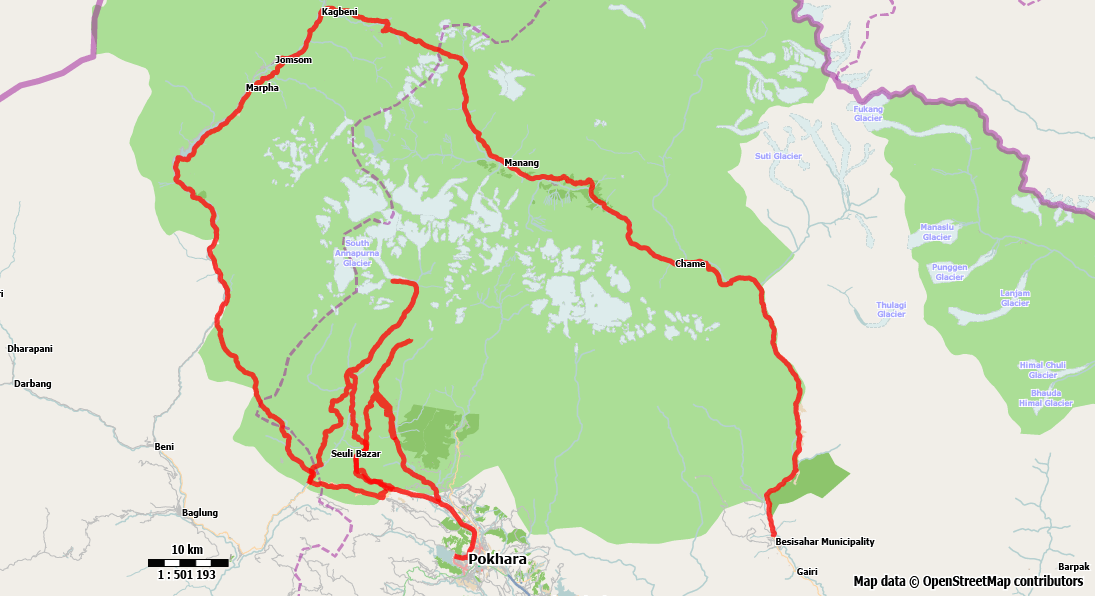
APC + ABC: From Jomsom you can either trek or take a bus/jeep down to Tatopani then trek to Ghorepani. From there the route to Annapurna Base Camp (8 days) awaits.
APC + Mardi Himal: From Jomsom you can either trek or take a bus/jeep down to Tatopani then trek to Ghorepani. There's tough climb from Ghorepani up to Australian Camp where you can begin the 4-5 day trek up to Mardi Himal. Moderate.
For those who want to rest up but still be in the mountains you can always include Poon Hill in your trek before leaving the Annapurna National Park.
Finally, there's an option to do an Upper Mustang Borderland Trek, which I've developed. It means a full day of trekking in the restricted area (no permit is needed), which brings a whole new level to the Annapurna Circuit. However, you will need a trekking guide for this.
For all extended Annapurna Circuit treks, many guides don't like to do these extensions as it means more work for them. Some dubious trekking companies may even try to charge extra as they will say it's an additional trek; it simply doesn't work like that, and I would avoid those types of trekking companies.It's worth picking up my Trekking in Nepal guidebook to find out how to deal with them!
These guidebooks are a hands on trekking guidebooks that are better than the rest. Yes, really!
The books contain day-by-day guides with accuracy using scalable maps, photographs and travel-tested up-to-date trekking information. Just like my other guidebooks these have been proven to be the best interactive, or paperback guidebooks to Nepal available anywhere today.
So what are you waiting for? Get your hands on these guidebooks and start trekking in Nepal today!
 |
 |
First Time Trekking in Nepal
|
Trekking in Nepal
|
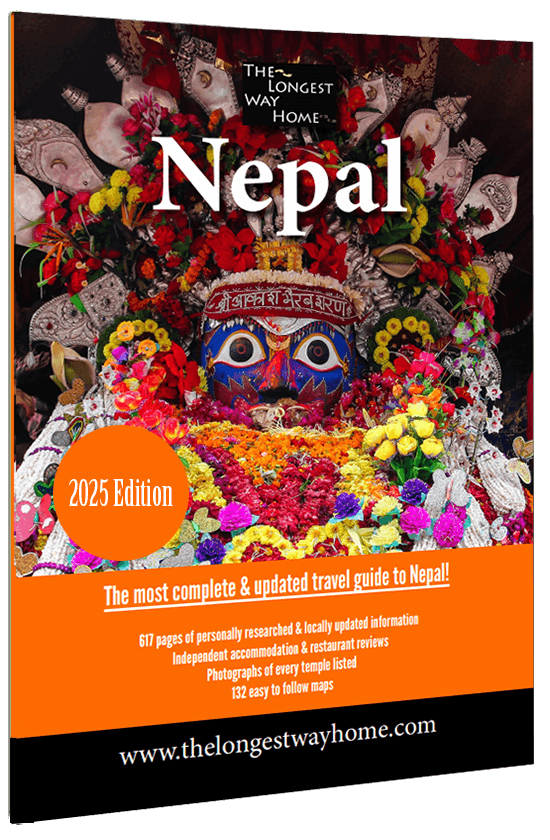 |
|
| Full Nepal Guidebook Complete country guide that also includes First Time Trekking in Nepal |
|
Was this page helpful to you? If so please tell others!

